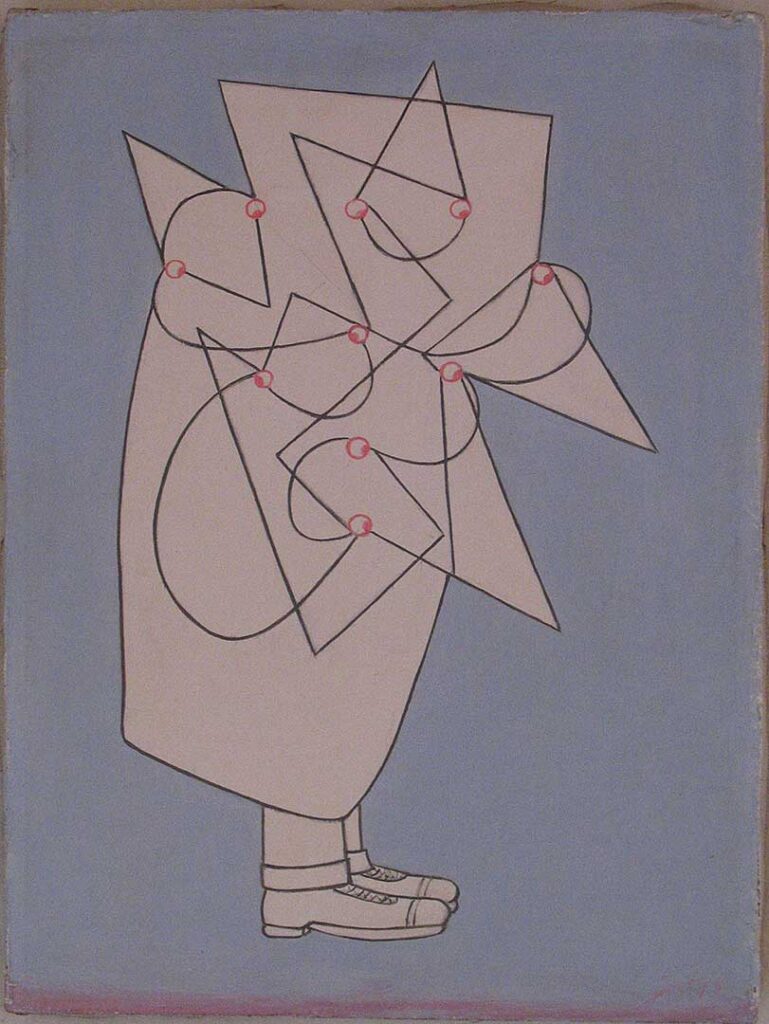A Biography by Rod Kessler
Quinton Oliver Jones
Salem, Massachusetts artist Quinton Oliver Jones (1903-1999) kept his curious, sometimes puzzling art hidden from public view during his lifetime, and his sculptural pieces, drawings, cartoons, and paintings have remained unseen in more than two decades since his death. His works, finally available for viewing at a 2017 gallery show at the Salem Athenaeum, are as striking for their visual immediacy and clarity as for their elusive, sometimes humorous, sometimes pensive iconography.
Quinton Jones, an eccentric who spent his life in self-imposed exile in his family home in historic Salem, was, additionally, a Harvard-trained reader of the classics who thought deeply about—and rejected—the artistic zeitgeist of his day, spurning the direction taken not only by Picasso and the Abstract Expressionists but also that of the social realists, disdaining the notion of art as a political or even sociological tool. He stood alone—and he understood that. With a shrug and a guffaw, he once explained, “No one would be interested . . . in the kind of work I do.” He understood that he was out of fashion—was, in fact, rejecting fashion. He had no interest in traditional landscapes, still life, or portraiture. He sought in his art, rather, a timelessness and purity, a connection that brought him into a dialectic with the realm of ideas.
What kinds of ideas? Consider these suggestive titles of his: “The Resonance of Solitude,” “The A Priori,” and “The Solitude of Beauty.” Among the themes that drew Quinton Jones were religion (“The Things of God are known only to the Spirit of God”), classical mythology (“He Comes, He Comes, Agamemnon Comes”)—even whimsy and pure fantasy (“The Numenous Room”). His paintings, typically oil on canvas and often intermingling the representational with the fabulous, allude to Shakespeare, and to the otherness of childhood, to signal events of his day (Hitler makes an appearance).

“The Specialist”
If Quinton Jones’ work is singular and original, it would be wrong to label him a primitive or even self-trained. At college (where his classmates included poet Stanley Kunitz and physicist J. Robert Oppenheimer), he earned an honors degree in Fine Arts. He briefly studied at the School of the Museum of Fine Arts, Boston.
Following his graduation from Harvard in 1926, he returned to the family home on Broad Street in Salem and stayed there for the remainder of his ninety-six years, caring for his mother, then living alone. He woke with the sun and went to bed in the early evening. Initially more sculptor than painter, Quinton Jones drew his models from the nearby Carpenter Street Home for Orphan Children. Old-time neighbors remember him, beret on head, purposefully walking the streets of Salem. He cooked for himself on a coal-fired iron stove. He never married, leaving behind not children but collections of carefully typed manuscripts (including an immense novel written in verse stanzas) and his artwork. When his home came into the possession of his niece and her husband in 1999, they made it their mission to bring his canvases—more than 350—to the public.